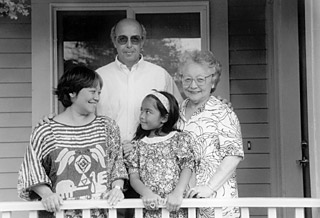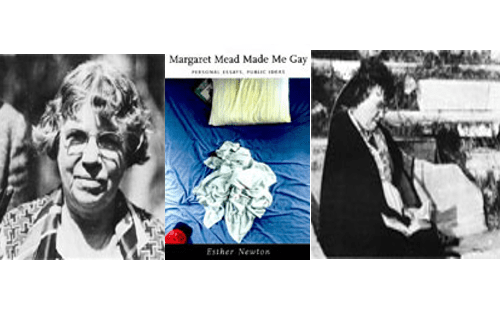My 31-year-old sister has Down syndrome. She lives in her own house, three miles away from my 70-something parents, and she works part-time busing tables at a local café. An extended network of people help her live on her own: my mother, her full-time advocate and teacher; my father, her biggest fan and supporter; her caseworker, Alicia, who oversees the coordination of her social services; her live-in house companion, Eleanor; her habilitation training specialist, Delores, who helps teach her skills such as balancing her checkbook; her speech pathologist, Judy; her boss, David; her 80-something best friend, Ellen, who gives her rides around town; and finally, her close friends Laurie and Elizabeth, two middle-aged dance therapists who listen to her and provide her with an endless supply of hugs. Then, of course, there’s me, but I live thousands of miles away.
From my vantage point, it is particularly evident how much of my sister’s daily existence depends on this extended family of friends and professional caregivers. In this respect, her life is not so different from that of other families in our country. Many families rely on similar (though not always as extensive) networks of support; it is just that in my sister’s case, the intricate web holding her up cannot be ignored. It is there, in plain view, for all who look.
This reality conflicts with the vision we have of family in our country. In spite of all the changes over the past 60 years, we still tend to think of the American family as a self-contained, autonomous unit, a self-sufficient grouping that can take care of its own. As feminists, we have done a lot to explode the June Cleaver illusions our society has stubbornly clung to: that fathers work, while mothers stay at home; that “normal” families come in only one color (white), one class (middle), and one geographical setting (the suburbs); that one parent is male and the other is female; that the “normal” path for children is to leave the nest at 18, attend college and/or get a job, marry, and have their own children. We have thought a lot about the role of women in the family, and how caretaking—both of children and the elderly—disproportionately falls to women, whether they are mothers or daughters, day-care workers or nannies, nursing-home workers or home-care attendants. But we still need to think more about the families of the approximately 49 million Americans (more than half of whom are women) who are physically, mentally, or developmentally disabled.1These “special” families” make visible the relationships and connections on which all families depend. It is just that our normative definitions of family as biological, autonomous, and able-bodied blind us, as a country, to the webs supporting so many of us.
The pages that follow draw from the years I have spent observing my parents and the members of our extended family striving to create a rich and meaningful life for my sister. While noting some of the important work authored by disability studies and feminist scholars, this essay focuses on my family’s experience in its exploration of the thorny issues that families with disabilities face. My hope is that our story will join the collective cry for a more inclusive vision of family and for social policies that support all families, including those who fall outside of what, in this country, is deemed “normal.”
- When Congress passed the Americans with Disabilities Act in 1990, 43 million Americans were cited as having a disability. Governmental estimates from the U.S. Census in 2000 found that in the civilian noninstitutionalized population over five years of age, 49.7 million Americans (19.3 percent of the population, or nearly one in five Americans) were disabled. According to the National Institute on Disability and Rehabilitation Research, the number of disabled women accounts for as much as 21 percent of the female population in the United States. More than half of the disabled population is female. They are less likely than their male counterparts to have a job, and they are far more likely to live below the poverty level. [↩]




